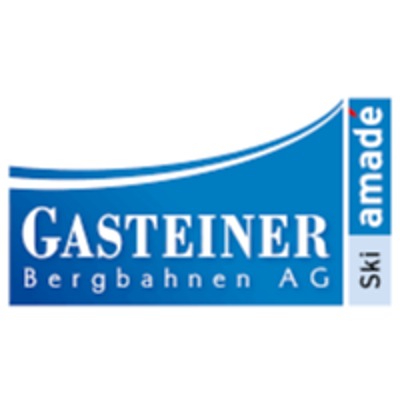Planned Expansion Of The Ski Infrastructure Between Feldberg And Notschrei Criticised

Increasing annual mean temperatures, summer drought and the increasing number of warm spells in winter call skiing in the southern Black Forest into question. Numerous lifts at medium altitudes have already closed in recent years. Now the communities of Feldberg, Todtnau and Oberried, together with ski associations and lift operating companies, are fleeing to the front. In the next few years they are planning a multi-million euro expansion of the ski infrastructure in the highest regions of the southern Black Forest with new downhill runs, lifts, snow-making systems, water reservoirs and competition sites. The Baden-Württemberg State Nature Conservation Association (LNV), the Baden State Association for Natural History and Nature Conservation (BLNN), BUND, NABU,
Current plans
The area of the Feldberg and its secondary peaks is the most important winter sports resort in the state of Baden-Württemberg due to its altitude. The area has been equipped with an extensive tourist infrastructure for many decades. Lifts, mountain railways, downhill slopes, cross-country ski runs, snow-making facilities, access roads, hotels and a multi-storey car park serve a rush of around 2 million people a year on hiking trails, cross-country ski runs and slopes.
In 2019, the so-called "Masterplan Feldberg" was created, commissioned by the operating company of the Feldbergbahnen and without the involvement of the nature conservation associations. At the cost level at the time, the far-reaching plans required an investment sum of 40 million euros, which will probably almost double due to the enormous increase in energy and construction costs in recent years and also the forecast further increases in price. The plans provide for the following:
In addition to the indicator and Seebuck lifts, another cable car with 10-seater chairs is to be built on the Seebuck. A water reservoir with a capacity of up to 180,000 cubic meters is to be built between the multi-storey car park and the House of Nature to ensure that the large amount of water required for snowmaking is met. Most of the water required is to be tapped in the Menzenschwander valley and in the upper Wiesental and then pumped up the mountain in pipes over 500 meters. At Grafenmatt, the 4 existing tow lifts (previously winter operation) are to be replaced by an extended chairlift that is also suitable for summer operation. One option is a restaurant on the Grafenmatt summit.
Overall, the lift plans will not increase the overall transport capacity. However, previously underused capacities in the Fahl area will be reduced and the lifts there will be dismantled. Instead, capacities will be relocated to the family-friendly slopes on Seebuck and Grafenmatt, which are in high demand. The optimization of capacities will therefore lead to greater passenger transport on the Feldberg. No wonder that the business plan assumes an increase in economic performance over the next ten years from 8 to around 15 million euros per year.
With the improvement in transport services, the parking situation will in turn become more difficult. Because despite the multi-storey car park, the situation remains tense on many winter days, especially since local public transport cannot cope with the rush to the "alpine snow island".
In Todtnauberg, municipality of Todtnau, a private lift operator is planning to replace the previous Stübenwasen drag lift with a more powerful 4-seater chair lift (2030 instead of 900 people/hour). As a supplement to the winter operation with a recently declining number of operating days, the operator is also planning summer operation. An additional attraction is a new winding downhill run for all-terrain three-wheel scooters (mountain carts). The operators assume that the number of winter guests will increase by 20 percent, in summer they assume 20,000 additional visitors.
The operator is also planning to replace the existing simple makeshift lift in the direction of the Stübenwasen summit with a more powerful extension drag lift, which will lead approx. 150 meters into the nature reserve. This enables an attractive descent (without the previous pushing section) over the "Nege" down into the valley. The regulation for the NSG Feldberg v. September 27, 1991, however, unequivocally prohibits the "establishment or substantial modification of ski lifts, snowmaking systems or other winter sports facilities."
The Stübenwasen, at 1,388 meters one of the Black Forest peaks with the best views and still of natural beauty, has so far been free of buildings, roads and other facilities. It is not only the location of many rare (sub)alpine plants, but also a refuge for siskin, capercaillie, meadow pipit and ring ouzel. The capercaillie, a bird species that is strictly protected under the Federal Species Protection Ordinance, has its most important occurrence in the southern Black Forest in the Feldberg area. In Baden-Württemberg, the number of roosters determined in spring 2022 fell to less than a hundred animals for the first time since records began. So far, the capercaillie can be found regularly in the area of the Stübenwasen summit. However, habitat loss and recreational activities are believed to be the main causes of the worrying decline of the species.
At the training and competition center of the German Ski Association (DSV) for Nordic skiing/biathlon and parasports at the Notschrei, competitive sports are primarily promoted. Additional routes for cross-country ski runs are now planned, which are also to be asphalted for summer use. In addition, the snowmaking system with snow cannons and lances is to be enlarged, which would result in the expansion of the existing water storage basin. The lighting for night operation is to be supplemented. The store for storing snow, including a store for sawdust, which is used as insulating material to cover the snow supply, is to be enlarged.
To compensate for the expansion, an approximately 3.7-hectare piece of forest in difficult terrain in the immediate vicinity of the cross-country ski run and shooting range is no longer to be used economically in the future, but closed down. The city of Todtnau is also planning the same thing. However, due to the difficult development and steepness of the terrain, these forest areas can already hardly be used economically anymore. The official decommissioning therefore does not represent a contribution to a functional balance for the nature conservation associations.
Planning from a nature conservation perspective
Tourism is an important economic mainstay of the region. The needs of the Upper Black Forest communities for income and job opportunities in tourism are undisputed. However, we believe that a trend reversal is inevitable. Because the permanent expansion of the tourism infrastructure is regularly associated with the loss of habitats and protected species. On the highest German low mountain range there are large areas of near-natural forests and species-rich grasslands that form habitats for many high-mountain and sub-alpine species. It is not without reason that the Feldberg has the largest and oldest nature reserve (founded in 1935) in Baden-Württemberg. Should the lift companies succeed in shifting just part of the winter tourism to the summer half-year, a further loss of species would be inevitable due to the large and difficult to channel summer tourism. Experience shows that ecological compensation measures cannot compensate for such losses. Due to the high altitude, suitable replacement areas are simply not available.
And last but not least, the expansion of the ski infrastructure devours huge investment sums that cannot be realized without public funds. In the coming years, enormous amounts of electricity and water will also be required for snow cannons and lift operation.
Conclusion
The signatory environmental organizations see the need to consolidate the existing infrastructure for winter tourism. We also do not shut ourselves off from promoting nature-friendly summer tourism. However, neither must be at the expense of nature. We strictly reject any further use of space. We deny that there is a public interest in such an expansion of tourism infrastructure. Because in view of climate change and the loss of species, the protection of our natural assets is of high-ranking public interest and, in contrast to the economically justified interests of today's beneficiaries, will endure in the long term.
The plans now presented increase the pressure on the nature on the Feldberg, which is irreplaceable for Baden-Württemberg, and further increase the consumption of resources. Funding through grants from the public sector can no longer be arranged today and is strictly rejected by us.
The press release is also made on behalf of the following regional associations:
- Baden State Association for Natural History and Nature Conservation (BLNN) (Dr. Albert Reif);
- BUND regional association southern Upper Rhine (Stefan Auchter) and High Rhine (Uli Faigle);
- State Conservation Association, Lörrach (Kai Hitzfeld) and Breisgau-Kaiserstuhl (Peter Lutz) working groups;
- NABU South Baden (Felix Bergmann) and Upper Black Forest (Siegfried Kognitzki);
- Friends of Nature OG Freiburg (Gabi Rolland);
- Black Forest Association District Hochschwarzwald (Marina Fuss).













